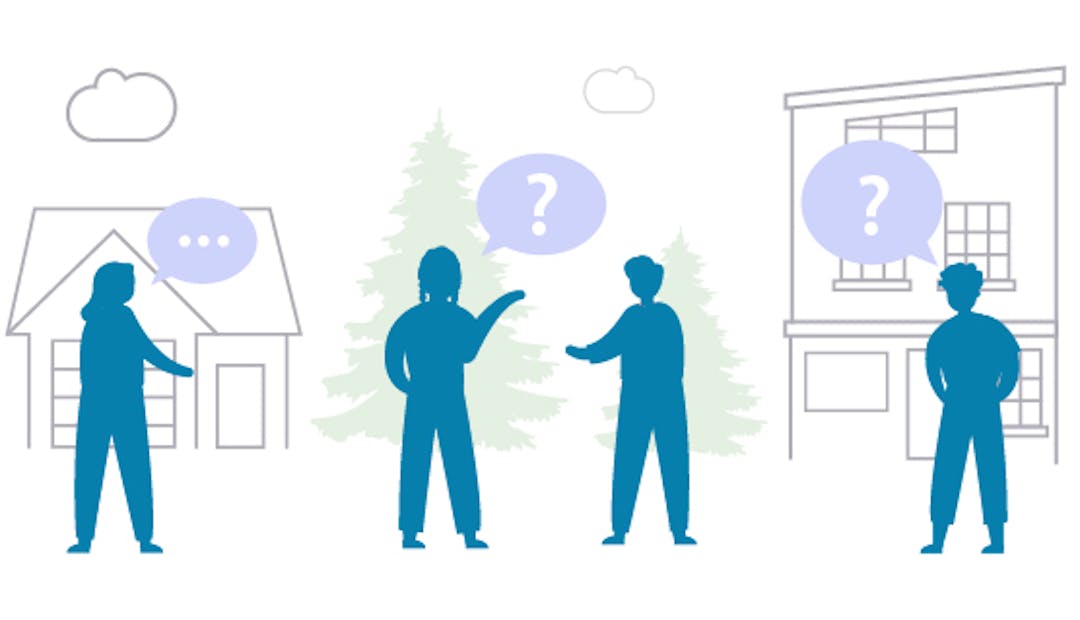Our Missoula Frequently Asked Questions (FAQ)

The information below addresses the most frequently asked questions about Code Reform, explaining what’s changing, why these changes matter, and how they will help Missoula grow in a way that’s fair, sustainable, and reflective of our community’s values.
We know this is a big change, and your feedback is important. If you have more questions or ideas, visit the Code Reform page. Your comments will help us continue improving the code and make sure it works for everyone who calls Missoula home.
The information below addresses the most frequently asked questions about Code Reform, explaining what’s changing, why these changes matter, and how they will help Missoula grow in a way that’s fair, sustainable, and reflective of our community’s values.
We know this is a big change, and your feedback is important. If you have more questions or ideas, visit the Code Reform page. Your comments will help us continue improving the code and make sure it works for everyone who calls Missoula home.
-
Why does building more homes help with affordability?
Share Why does building more homes help with affordability? on Facebook Share Why does building more homes help with affordability? on Twitter Share Why does building more homes help with affordability? on Linkedin Email Why does building more homes help with affordability? linkWhen there aren’t enough homes for the people who want to live here, prices go up and households have to compete. By allowing more homes and different housing types, we can:
- Ease pressure on prices.
- Give more choices for first-time buyers, seniors, and working families.
- Keep people from being pushed out of the community.
A housing market with enough homes is more stable and more affordable.
-
New homes will still be too expensive for me to buy—how does allowing more construction actually help?
Share New homes will still be too expensive for me to buy—how does allowing more construction actually help? on Facebook Share New homes will still be too expensive for me to buy—how does allowing more construction actually help? on Twitter Share New homes will still be too expensive for me to buy—how does allowing more construction actually help? on Linkedin Email New homes will still be too expensive for me to buy—how does allowing more construction actually help? linkIt’s true that most new homes are built at today’s prices and may still be expensive. But allowing more construction helps in another important way—through something called “housing filtering.”
- When new homes are built, people who can afford them often move out of older homes or apartments.
- Those older homes then become available for other households at lower prices or rents.
- Over time, this creates more movement and more choices in the housing market.
In short, new homes help open existing homes for others, creating more options for everyone.
-
Will the new zoning raise my property taxes?
Share Will the new zoning raise my property taxes? on Facebook Share Will the new zoning raise my property taxes? on Twitter Share Will the new zoning raise my property taxes? on Linkedin Email Will the new zoning raise my property taxes? linkNo. Zoning changes do not raise property taxes. Tax rates are set by the state legislature and local budget decisions, not by zoning. Here’s what that means in practice:
- Zoning does not affect your tax rate. It defines how land can be used, not how it’s taxed.
- New housing and growth can actually help spread costs over more taxpayers, which can reduce pressure on individual households.
- Your tax bill only changes if local or state budgets change, or if your property value changes compared to others—not because zoning rules are updated.
In short, zoning sets rules for how property can be used—it doesn’t decide how much tax you pay.
-
Will the new zoning lower my home value?
Share Will the new zoning lower my home value? on Facebook Share Will the new zoning lower my home value? on Twitter Share Will the new zoning lower my home value? on Linkedin Email Will the new zoning lower my home value? linkNo. The goal of the new zoning code is to make housing more available and stable—not to reduce the value of existing homes. Here’s what we’re working toward:
- Making it easier to build new homes that people can afford, so more Missoulians can find a place to live.
- Slowing down extreme price increases that make housing out of reach for many families.
- Supporting steady, healthy growth—the kind that helps property values rise at a sustainable rate, instead of spiking quickly and pushing people out.
In short, the new zoning is about building a more balanced housing market—one that keeps Missoula affordable while protecting long-term neighborhood stability.
-
Why was the old zoning unfair, and how is the new zoning different?
Share Why was the old zoning unfair, and how is the new zoning different? on Facebook Share Why was the old zoning unfair, and how is the new zoning different? on Twitter Share Why was the old zoning unfair, and how is the new zoning different? on Linkedin Email Why was the old zoning unfair, and how is the new zoning different? linkIn the past, Missoula’s zoning rules caused most new housing—like apartments—to be built in our lowest-income neighborhoods. Meanwhile, many higher-income areas allowed for only single-family homes. This made it harder for some families to find housing in parts of the city connected to schools, parks, and services.
The new zoning code is designed to be more fair and balanced by:
- Allowing more housing options in more neighborhoods, not just a few.
- Encouraging smaller, more affordable homes across the city.
- Sharing growth more evenly, so no one neighborhood carries all the change.
In short, the new zoning helps every neighborhood be part of Missoula’s future—so everyone has a fair chance to live where they want.
-
I’m scared Missoula will change into something I don’t recognize.
Share I’m scared Missoula will change into something I don’t recognize. on Facebook Share I’m scared Missoula will change into something I don’t recognize. on Twitter Share I’m scared Missoula will change into something I don’t recognize. on Linkedin Email I’m scared Missoula will change into something I don’t recognize. linkThat feeling is understandable. Missoula is a special place, and it’s natural to worry about change. But growth is already happening—our choice is how we guide it. Here’s how we’re doing that:
- Change will happen slowly, not overnight.
- New development will be designed to fit with existing neighborhoods through context-sensitive design.
- Planning ahead helps protect what we love while making room for the people who make Missoula strong.
- Saying “no” to all growth would mean telling some people—teachers, nurses, and our own kids—that there’s no place for them here. That’s not the Missoula we believe in.
In short, growth is coming no matter what. The new zoning helps us manage it thoughtfully—so Missoula can grow and change without losing the things that make it home.
-
What does “context-sensitive” mean?
Share What does “context-sensitive” mean? on Facebook Share What does “context-sensitive” mean? on Twitter Share What does “context-sensitive” mean? on Linkedin Email What does “context-sensitive” mean? link“Context-sensitive” means new buildings should blend with the neighborhood around them—in size, scale, and overall look. The idea comes from city planning practices that focus on making growth blend in with its surroundings instead of standing out or replacing what’s there.
In Missoula’s new zoning code, this means new housing should match the feel of the area while still allowing more options. We do this by:
- Keeping apartment buildings similar in scale to surrounding homes.
- Setting rules for height so buildings fit comfortably with others in their neighborhood.
- Using new tools like Floor Area Ratio (FAR) to manage how big a building can be.
- Creating smooth transitions between different zoning areas, like stepping down from taller to shorter buildings.
- Supporting gentle infill—small, gradual changes like adding duplexes or cottage homes.
Context-sensitive development means growing in a way that fits—so neighborhoods can change over time without losing their character.
-
What exactly is gentle infill?
Share What exactly is gentle infill? on Facebook Share What exactly is gentle infill? on Twitter Share What exactly is gentle infill? on Linkedin Email What exactly is gentle infill? linkGentle infill means adding a few new homes over time in existing neighborhoods—without changing their overall character. It’s a gradual, small-scale way to help more people live in the parts of Missoula that already have schools, parks, and services nearby.
- Examples include duplexes, cottages, and small apartments.
- It happens one lot at a time, over many years.
- Gentle infill is about welcoming gradual change—not big, sudden projects—so neighborhoods can grow in a way that feels familiar and comfortable.
-
My neighborhood was built under a special zoning district and isn’t finished yet—what happens now?
Share My neighborhood was built under a special zoning district and isn’t finished yet—what happens now? on Facebook Share My neighborhood was built under a special zoning district and isn’t finished yet—what happens now? on Twitter Share My neighborhood was built under a special zoning district and isn’t finished yet—what happens now? on Linkedin Email My neighborhood was built under a special zoning district and isn’t finished yet—what happens now? linkGenerally the new zoning provides more flexibility and more development options. The new zoning:
- Doesn’t change existing lots.
- Doesn’t force change on existing buildings.
- Simply offers more options for redevelopment.
- Doesn’t override private development covenants
The goal is to expand opportunities within the zoning.
-
Will my neighborhood change quickly?
Share Will my neighborhood change quickly? on Facebook Share Will my neighborhood change quickly? on Twitter Share Will my neighborhood change quickly? on Linkedin Email Will my neighborhood change quickly? linkNo. Neighborhood change happens slowly over many years.
- You will not wake up and find your block completely different.
- Most change comes from individual property owners making small decisions over time.
This approach supports existing neighborhood identity while allowing room for future generations.
Follow Project
FAQ tags
Our Missoula Phases
-
Phase 1: Community Launch
Our Missoula Frequently Asked Questions (FAQ) has finished this stageWatch a video of the Community Kickoff event on October 4, 2022 here.
-
Phase 2: Define the Problem
Our Missoula Frequently Asked Questions (FAQ) has finished this stageIdentify how our codes and policies fall short in addressing equity and community needs.
-
Phase 3: Scenarios for the Future
Our Missoula Frequently Asked Questions (FAQ) has finished this stageWhat could change look like for Missoula?
-
Phase 4: Growth Policy Update and Future Land Use Map
Our Missoula Frequently Asked Questions (FAQ) is currently at this stageAffirming our community vision.
-
Phase 5: Development Code Update
this is an upcoming stage for Our Missoula Frequently Asked Questions (FAQ)How will Missoula get there?
-
Phase 6: Adoption of Unified Development Code
this is an upcoming stage for Our Missoula Frequently Asked Questions (FAQ)Implementing Missoula's vision.
Contact Us
-
Community Engagement Specialist
Community Planning, Development & Innovation, City of Missoula

-
Long Range Planning Supervisor
Community Planning, Development & Innovation, City of Missoula

-
Senior Planner
Community Planning, Development and Innovation, City of Missoula


